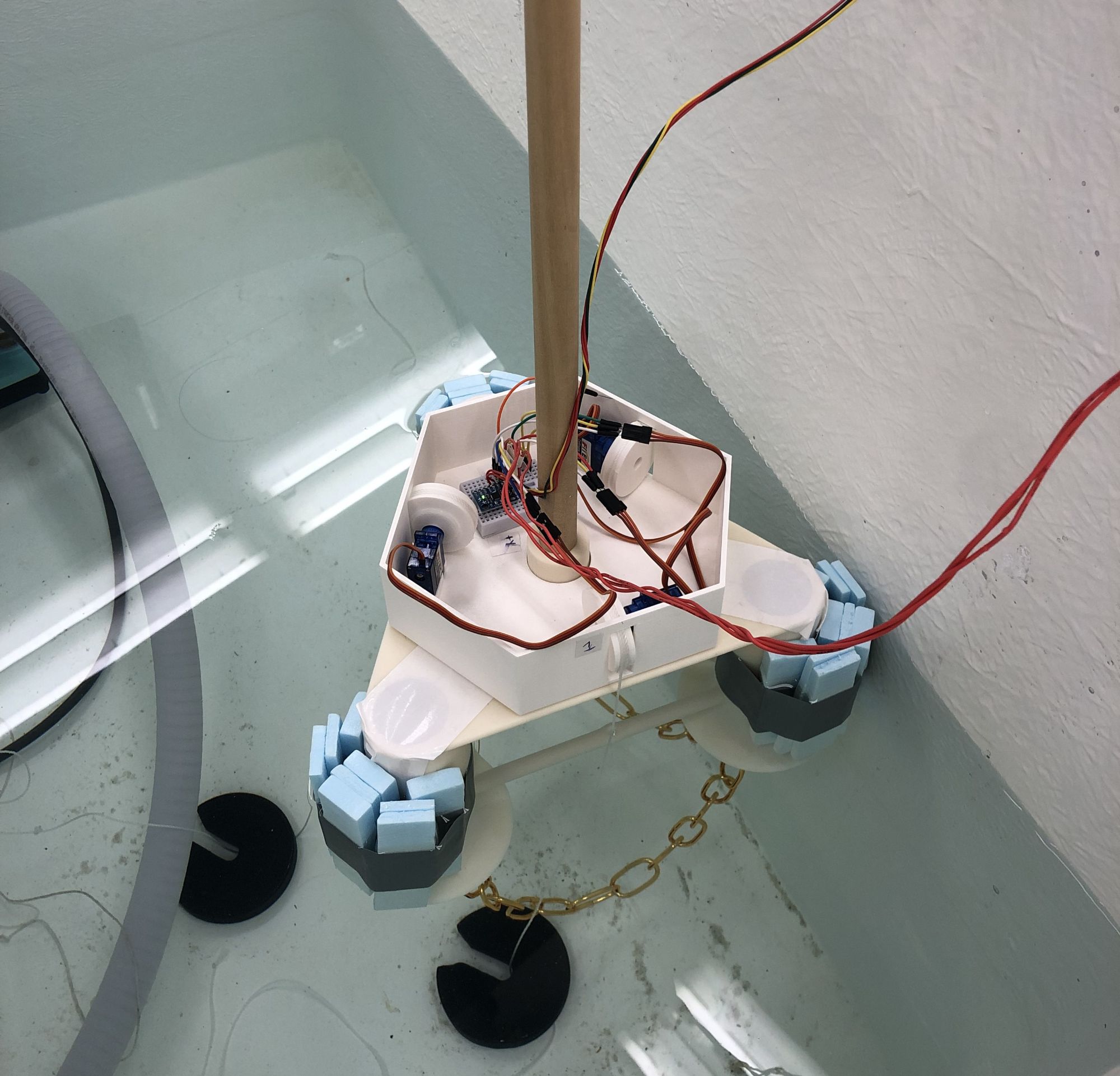Active Stabilization of a Floating Wind Turbine
The goal of the project was to design a scale-model of a floating wind turbine base which used active methods for maintaining its stability. Initially, my team and I were given a passively damped design completed by a previous year’s project group for use in this process. Introducing active stabilization to their design provides the unique ability to reliably counteract forces acting upon the structure from wind, waves, and currents. The active stabilization method had to be designed considering constraints of codes, constructability, cost, functionality, maintainability, sustainability, standards, and more. Following a meticulous design process, my team and I were able to assemble a physical prototype of an active stabilization method and test its effectiveness in water.
Design Features

The active stabilization system my team and I decided on was a tension leg system. This design runs cables from the semi-submersible base down to the ocean floor with motors attached to the cables on the base. These motors can tighten or loosen the cable on demand. Three cables were used, one on each side of the base, to provide force in any direction. These motors were controlled by an Arduino processing unit and input data was taken from a 3 axis gyroscope.
While our finalized product was functional, it did not match all standards set by our team at the beginning of the semester. My team and I intended and mocked up the mechanisms for determining the correction motion of each of the 3 ropes based on the acceleration, velocity, and position of the gyroscope as well as the amount of movement the rope has already experienced. It was also planned to include PID control as well as other more advanced stabilization mechanisms, and, while these were designed steps, they were never implemented. These would be areas I would hope to explore if I had more time to continue work on this project.
Project Challenges
This project was completed during Fall of 2021 during the COVID-19 outbreak. The team consisted of 5 members and each member contributed their share to the project. During the span of the project, almost every member (including myself) experienced complication working on the project with either COVID-19, surgery, or other illness. This made it difficult to meet in person and synergize all of our team’s work. Throughout our struggles, I am proud of my own and our team’s ability to persevere and work together despite the circumstances to complete a functioning project.